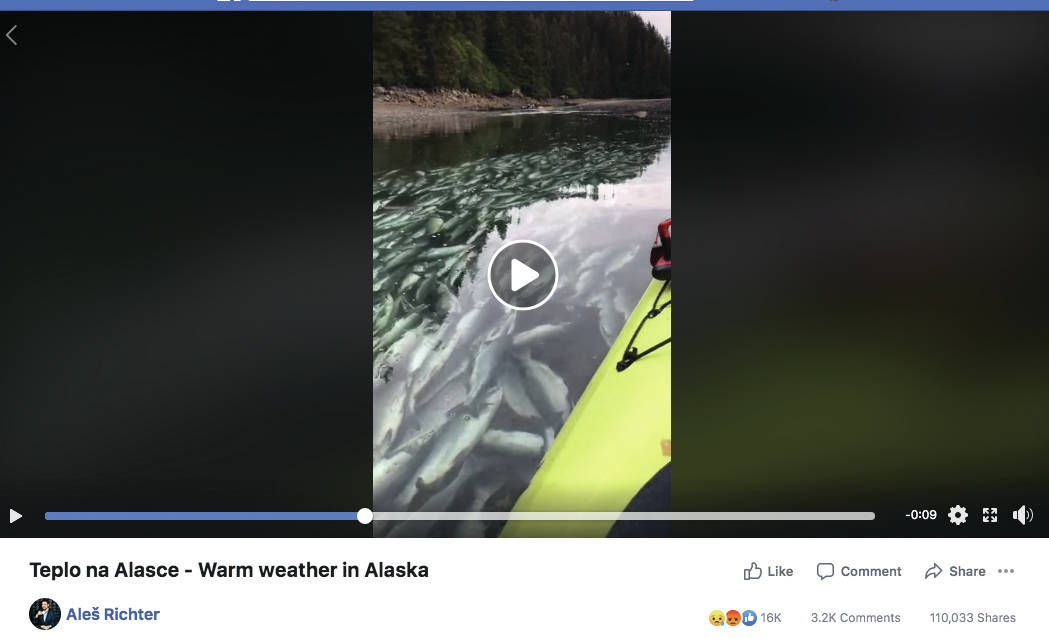A Facebook video posted last week of dead or dying pink salmon in Tutka Bay shows what turns out to have been the result of a harvesting accident, not warming temperatures, as originally suggested in the post by the tourist who videotaped it.
Ales Richter of the Czech Republic was visiting Alaska when he captured a video of salmon floating at the top of the water while kayaking in Tutka Bay on July 28.
“Unfortunately, the incredibly warm and sunny summer in Alaska has a dark face,” he wrote in a translation. “This is how salmon died after the entering to Tutka Lagoon in Kachemak Bay State Park near Homer.”
While Alaska’s unusually hot summer has caused warmer stream and ocean temperatures in some areas, that didn’t cause the death of the large group of salmon seen by Richter. Dean Day, executive director of the Cook Inlet Aquaculture Association, said the salmon came from a net that ripped during a cost-recovery fishing harvest near Tutka Bay on the south side of Kachemak Bay.
“The seiner got hung up in an area right there, and as a result some of the fish, when the net got hung up, some of the fish died,” Day said in an interview Monday. “… This was not a result of some event of warm water, lack of oxygen or anything of that nature.”
CIAA runs the Tutka Bay Lagoon Fish Hatchery, and contracts with commercial fishermen to harvest pink and other salmon to help fund hatchery and other association programs. Day said about 13,000 salmon harvested in that net were sold to a processor. The escaped fish couldn’t be recovered at the time because of a changing tide. By the time the dead fish could be retrieved, they weren’t marketable, Day said.
About 700 to 1,200 fish were estimated to have been lost. The fish are not used for broodstock in the Tutka Bay Lagoon Hatchery.
Glenn Hollowell, the Homer area management biologist for the Alaska Department of Fish and Game, said he had seen the video and several things struck him as not fitting with a theory of a die off from warm temperatures or low oxygen.
“It would be unusual that the fish would be grouped that tightly in the same direction,” Hollowell said. “They were all similar quality. They were all similar fish.”
In his observations of salmon this season, Hollowell said he has not viewed large die-offs of fish and has not seen carcasses or any deaths that could be from thermal stress. In tidal mixing zones where fresh water enters the sea, a lot of fresh water comes straight down from the mountains, he said, and thus is cooler. Fish and Game biologists have been monitoring water temperatures, but have not yet released any reports.
Day said people can expect to see more dead salmon, but that will also have a more mundane explanation: the end of the natural life cycle of salmon that return to natal streams to lay or fertilize eggs and then die.
“It’s important to note that in the next few weeks there will be a significant number of naturally spawned carcasses coming out of the creek and in the same area,” Day said.
As of Tuesday, Richter’s video had almost 5 million views, 110,000 shares and 3,200 comments.
“It’s an unfortunate event,” Day said. “We obviously don’t like to see this type of thing happen. It’s also important that we get the correct information out there.”
By press time, Richter had not returned a Facebook message seeking comment on his video.
Reach Michael Armstrong at marmstrong@homernews.com.


